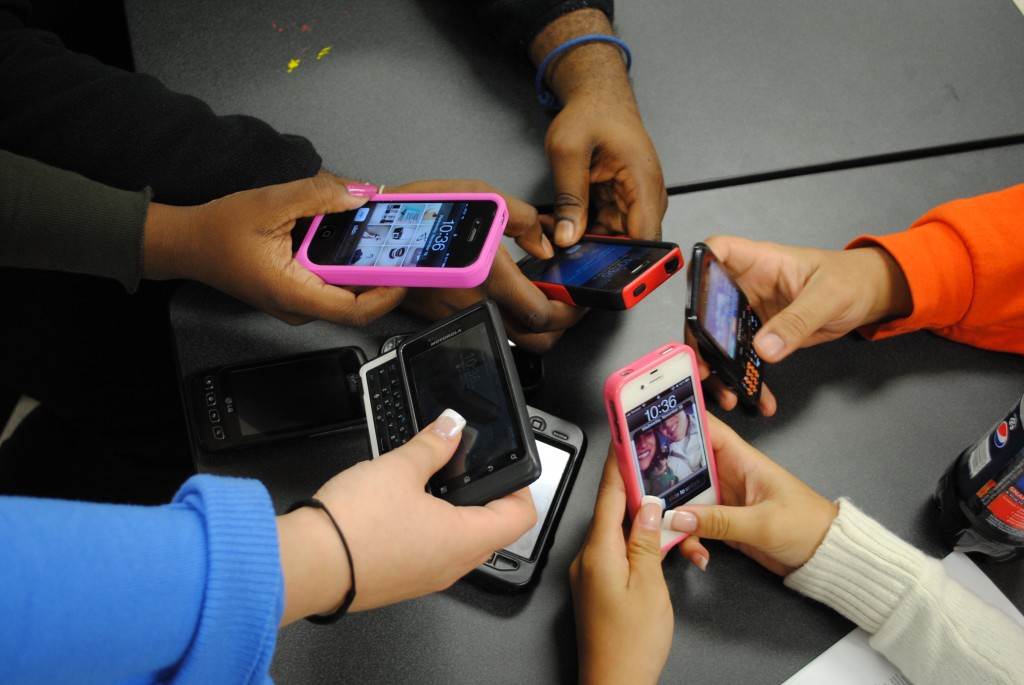“There are no lights inside the skull.” (Seth) Your brain is a faker, a liar, a story teller. Your brain, locked inside the skull, cannot on its own discern the reality that our bodies live within. The images that we see, the sounds that we hear, and the warm summer breeze that we feel on our face are all sensations that our brain has synthesized from the inputs it receives from our five senses. On some level of course we know this. But our brain produces such a compelling, magical internal narrative of the reality around us that we seldom stop to consider the limits of our ability to perceive the reality around us. Can we trust the interpretation of the world around us that our brain supplies? Or does our brain deceive us? Does it fill in gaps in its perceptions with guesses, or even lies?
In his TEDtalk, Anil Seth demonstrates how our brain’s guess at the meaning of some sensory input can change depending on context. (Seth) Seth plays a sound for the audience, and it seems to me to just be noise with no meaning. Then Seth plays another audio clip, and this time I can hear speech. Now Seth plays the original clip, and instead of noise, I can now make out words and understand it as speech. This shows that the reality presented by our brain is fluid. One moment we hear just noise, the next we hear a spoken message complete with meaning, and perhaps we can even identify the speaker’s identity. (Seth)
My interest in the nature of consciousness was prompted by an unusual experience I had with unconsciousness. While riding my motorcycle, a car turned left right in front of me. Bang! I hit the car and flew down the road. I just lie still in the road, waiting for help, too scared to even turn my head to scan for injuries. I knew help was near when I heard the wail of a siren. Soon a medic appeared above my face, and asked me if I was in any pain. I motioned to my leg and said, “yea, my leg.” The medic looked me in the eye, and in a matter of fact manner told me “Well of course, you have a major deformity.” What?! Suddenly the medics wrapped me up and strapped me down in the way that they do, and sped off to the hospital. When we arrived, they had to push a buzzer to get the locked door to open. A voice on the speaker asked “is that the one with the major deformity?” I really wish they didn’t talk about me like that. The medic replied in the affirmative, the door opened and down the hall we went.
When we arrived in the trauma bay there were audible gasps, children cried and dogs barked. I could see the doctors were disturbed, but everyone jumped into action. One nurse seemed to take an inappropriate amount of pleasure in repeatedly poking me with some sharp thing while asking “Can you feel this? Good. How about now?” Soon I heard a voice say “I don’t think it should be that shade of blue.” After a short session of whispering, the doctors announced that they were going to send me to the K-Hole. An intern echoed the announcement in a sing-song voice “Going to the K-Hole!” Some people were grinning. The doctors explained that they needed to do a procedure to correct the deformity, and if I ever wanted to walk again it would be best if I didn’t offer any advice or assistance during the process. They said Ketamine and propofol would be administered and I would have a short nap. I didn’t know what Ketamine was, but the mention of propofol scared me. Isn’t that the stuff that killed Michael Jackson? I suddenly realized that throughout this ordeal I hadn’t been able to contact my loved ones and surely they would be wondering where I was. So I shouted “Wait! I need to make a call!” And in that horrible moment of chaos and confusion the only phone number I could remember was the number to my childhood home. But that number had been disconnected years ago when my parents moved away. Panic overtook me; I feared that I might die and no one would know where I was. After I announced my failure to recall a single phone number, they started the familiar “Count backwards, starting with 99.”
And then it went black. Not in the falling curtain kind of way when you sleep. It was more like how those old black and white TVs would turn off. The screen went black except for a horizontal white line in the middle. Then the line shortened from each side until it ended in a tiny white dot. Then it was gone and only blackness remained. But I was still there. Instantly I felt it. I said to myself, “Well, there you go. I just died.” Then I had that cliche out of body experience. I felt like I was floating through dark space. It wasn’t like some stories you hear; I didn’t float above the operating table and watch the room in action. No, I was far, far away surrounded by blackness. After a short moment of fear I came to accept this new reality as my fate. I think I could say I was comfortable. This was going to be O.K.
Then the lights came on! My first reaction was disappointment. I thought, well, where did they take me now? My next feeling was amusement. I still felt I was floating in the far away space, but my view was of a nurse, patting my hand and looking over me to an unseen person behind me. I could hear her saying “OK, he’s back with us.” Inside I laughed. I said to myself “No I’m not!” I couldn’t move or speak. I was very disoriented. It seemed to me that I must have embarked on a space ship. They grabbed the gurney I was laying on and wheeled it down the corridor. My space ship assumption was confirmed when I saw the overhead fluorescents scroll by as we traveled. Soon they inserted me into a big white machine that I would later learn was for a CAT scan. The machine had a bright red laser dot that was carefully positioned on my forehead right between my eyes. Once again I felt frustrated. I thought “Oh no, now they’ve gone and turned me into a robot!”
By the time they wheeled me back to the trauma room my old reality began to coalesce. My feeling of being in space, or of becoming a robot dissipated. I looked down, and could see that my leg was there, wrapped in a newly formed plaster cast. My foot was sticking out the end, and it seemed to be pointing the expected direction. The gleeful nurse was back, repeatedly poking the foot again with a sharp object. The doctor returned and seemed to take great pride in announcing the glowing pink color of my toes as if it was his own foot.
With the crisis averted, the room soon emptied. I had a moment of quiet when all had left, and had a chance to consider what had just happened. I could vividly remember the experience, and it still felt frighteningly real. Where did all those feelings and images come from? Clearly my brain was hallucinating, but I had no idea it could seem so real. Anil Seth goes so far as to say that “we’re all hallucinating all the time… when we agree about our hallucinations, we call that reality.” (Seth)
My experience was a challenge to my ability to differentiate between reality and hallucination. I was surprised I could so easily change my sense of self. Why was it so easy to accept that I had become one with a CAT scan machine? In his TEDtalk, Seth demonstrates how a particular context can cause a person to confuse whether a rubber hand is actually a member of his own body. (Seth) The subject of the experiment comes to accept that the rubber hand is indeed a part of his own body. In his article “Alternative Facts’: A Psychiatrist’s Guide to Twisted Relationships to Truth”, Ronald Pies says that if you cannot distinguish between a lie and the truth then you are delusional. (Pies) John Rust says “a delusion is a firmly held false
belief.” (Rust, 2) But as we have seen, much of what we perceive is at least somewhat false.
I once read a story about a delusional man that seemed to be able to become whoever he wanted to be. (Birch) He went to the hospital in what appears to have been a search for pain medication. The doctors interviewed him, as they will do when attempting to diagnose your condition, and were surprised when his stories didn’t match with his medical history. His ability to alter the stories seems to also show an ability to alter his self. Usually when we wish to alter some aspect of our self in reality, we have to engage in some hard work. If we want to lose weight, we go to the gym, adhere to a diet, etc. If we want to become a mathematician or scientist, we must go to school and study hard for years. But this person is able to become who he wants by harnessing the reality making part of his brain. He truly seemed convinced that the stories he told were true and was not bothered in the least that they didn’t match reality. Although this person’s wild imagination was extreme enough to be unhealthy, imagine what we could do to eliminate suffering if we could harness this ability to just not care about the reality of certain aspects of our life or body.
What if delusion could be a good thing? Consider someone distressed by some self-perceived “ugliness” to the point of obsession or in an extreme case suffer from body dysmorphism where they perceive an “ugliness” that doesn’t really exist. Someone who might pursue corrective surgery. What if we could train our minds to discard the false signals of dysmorphism, or change our judgmental view of the crows feet and smile lines on our face? What if we could use a lie to convince ourselves of the truth? “I don’t have any crows feet. I am beautiful!” Reporter Lucette Lagnado writes in the Wall Street Journal about one doctor trying to understand “why patients struggle to process images of themselves realistically.” Lagnado quotes Dr. Feusner as saying “We believe that we need to change the brain for treatment to be effective.” (Lagnado) How much better it would be if we could re-train the brain instead of just throwing medication at the problem.
As we can see, our brain’s ability to hallucinate our reality goes beyond the straightforward interpretation of the signals sent to the brain by our five senses. Our reality of who we are, our memories, and our experiences are subject to the exceptional power of our brain to manufacture reality, in the dark inside our skull.
Works Cited
Birch, Cheryl D., et al. “A Review and Case Report of Pseudologia Fantastica.” Journal
of Forensic Psychiatry & Psychology, vol. 17, no. 2, June 2006, pp. 299-320. EBSCOhost, doi:10.1080/14789940500485128.
Lagnado, Lucette. “Help for Patients Obsessed with their Imperfect Bodies; Obsessing about Body Flaws Isn’t Uncommon. Kim Kardashian Talked about Her Concerns. here’s how some Doctors Treat Body Dysmorphic Disorder.” Wall Street Journal (Online), Nov 14 2017, ProQuest. Web. 13 May 2018 .
Pies, Ronald W. “’Alternative Facts’: A Psychiatrist’s Guide to Twisted Relationships to Truth.” The Conversation, The Conversation, 24 Apr. 2018, theconversation.com/ alternative-facts-a-psychiatrists-guide-to-twisted-relationships-to-truth-72469.
Rust, John. “Delusions, Irrationality and Cognitive Science.” Philosophical Psychology, vol. 3, no. 1, Mar. 1990, p. 123. EBSCOhost, search.ebscohost.com/login.aspx? direct=true&db=a9h&AN=9606211430&site=ehost-live.
Seth, Anil. “Your brain hallucinates your conscious reality.” TED. April 2017. Lecture. http://tedtalkspsychology.com/brain-hallucinates-conscious-reality-anil-seth/





1 Comment
Add Yours →Brilliant and thought provoking